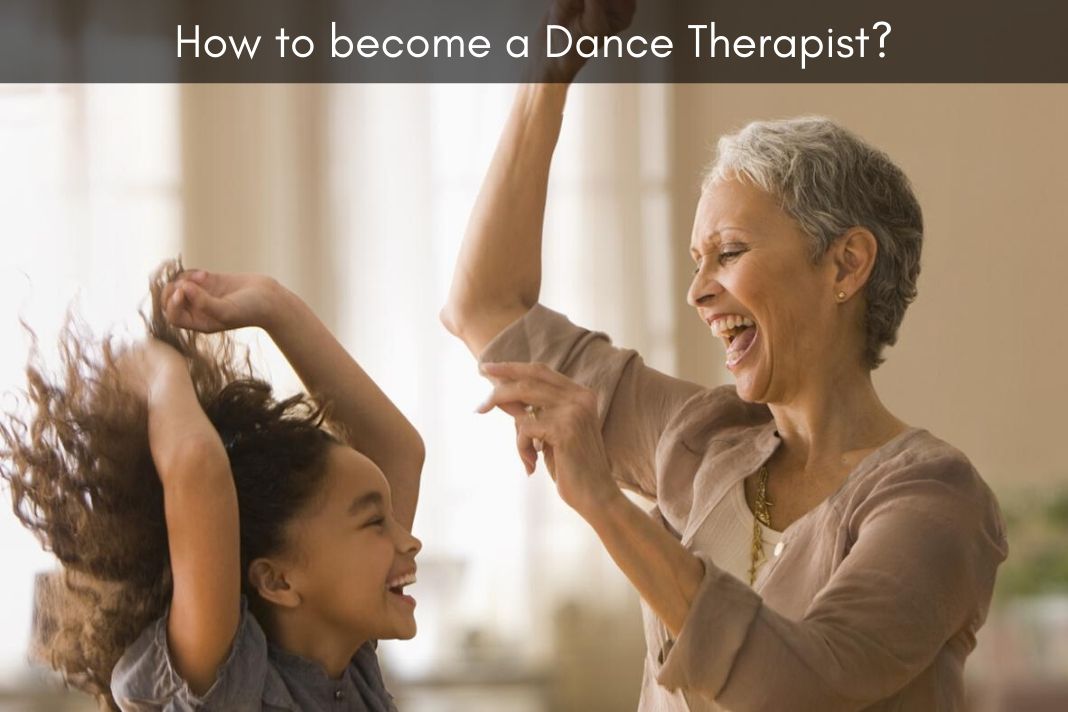
Working as a dance therapist provides an opportunity to help people dealing with psychological, emotional and physical problems. Dance movements have been known to improve the lives of others. According to the American Dance Therapy Association (ADTA), the history of dance therapy dates back to the 1940s when the medical world recognized the connection between the mind and body. Dance therapy jobs are facilitated in a variety of practice settings like wellness centers, rehabilitation centers, hospitals, playschools, and other treatment centers.
Dance therapists promote holistic healing in people with mental illnesses and physical disabilities. A dance therapist should be empathetic so that they can understand the non-verbal behavior, body language, movements and emotional expression of the client.
They should have the ability to understand what the other person is going through. Dance therapists work with people of all age groups — from infants to the elderly. They promote self-awareness, self-esteem, and holistic living.
Health Issues Addressed by Dance Therapy
Dance therapy is an ideal form of mental health counseling for all age groups. It is a healing treatment for individuals who are unable to express verbally their issues about mental, physical, and emotional health. As a dance therapist, you must assist individuals suffering from problems like social anxiety and phobias, Depression, Eating and sleeping disorders, Autism, Alzheimer’s disease, and trauma.
How to Become a Dance Therapist in Steps
If dance is your passion, then this can be an amazing career choice for you. However, dance therapy is different from regular dance and a How to Get the Best Jobs for Psychology Majors? An in-depth study of the linkage between dance and health is required. The steps below will guide you on how to become a dance therapist.
Step 1: Learn Dancing and Obtain an Undergraduate Degree
You need to have some background experience in dance to become a dance therapist. Take up a variety of dance classes so that you get familiarized with the types of movement used in therapy.
You should have at least five years of experience in dance to obtain a graduate degree in dance movement therapy. Take classes in psychology in addition to dance classes. Having a basic understanding of psychology will help you in providing dance therapy to people.
Step 2: Get a Master’s Degree
Several accredited schools offer dance movement therapy programs. ADTA has around seven dance therapy programs listed on their website. Graduates from ADTA-approved graduate programs meet all educational requirements to become registered dance therapists. Completing the course is not enough to become a dance therapist.
You should need some practical experience. You need to complete at least 700 hours of internship and fieldwork to complete your master’s degree in dance movement therapy.
Step 3: Kick Start Your Career
Start networking with people in your field. It will help you find someone who can help you in your career. Knowing people in your field can help you in many ways.
You may get leads to jobs or there might be other dance therapists who are looking in for more people. Keep looking for dance therapy job postings published in job networking sites. Networking also helps in broadening your horizons and improve your practical knowledge of dance therapy
Step 4: Advertise Yourself
Add yourself to the online list of qualified dance therapists found in the websites of dance movement therapy associations. Join in job-networking websites so that clients can easily find you. Because of its niche, you should be able to market yourself aggressively to attract clients. People might not even know that they need dance therapy. Convincing them and bringing them on as clients are the first step in furthering your career.
Career of a Dance Therapist
Rewards of a dance therapy career are endless in an intellectual, creative, physical and spiritual way. As a dance therapist, you will be hired in daycare, rehabilitation centers, hospitals, schools, and private practices as well. Depending upon the age group the therapy program changes. For instance, therapy programs for children are different from those of the elderly and those recovering from abuse, or those dealing with physical disabilities.
Dance therapist is responsible for making the clients feel less depressed and more confident in their lives. The concept of dance therapy is that motion and emotion are interconnected. Feelings and what people go through in their life live inside the body and get trapped there.
This leads to depression and a loss of confidence. Dance therapy is the key to unlock the trapped feelings and emotions and profoundly heals the same. As a dance therapist, you must know to empower people through dance movement. You should provide your clients with the therapeutic space to create awareness of the mind, body connection.
[Also Read:10 Tips For Freelance Dancers To Excel In Their Careers]
Dance Therapist Salary & Job Outlook
The U.S Bureau of Labor Statistics has pointed out that the median pay of a dance therapist is $47,860 per year and $23.01 per hour as of 2018. The job growth is projected to be 7% in 2018-2028. The ADTA has noted that dance therapist jobs will continue to grow as more schools, hospitals, rehabilitation centers, and other treatment centers have started to hire dance therapists.(1)
Is this Career for You?
Dance therapy is the best career option if you are passionate about serving society. It is one of the fastest-growing fields owing to an increase in the elderly population. You need to possess compassion, patience, and empathy to make your clients feel comfortable. At the end of the day, you are given the responsibility of assisting clients in leading a healthy, proactive and fulfilling life.




